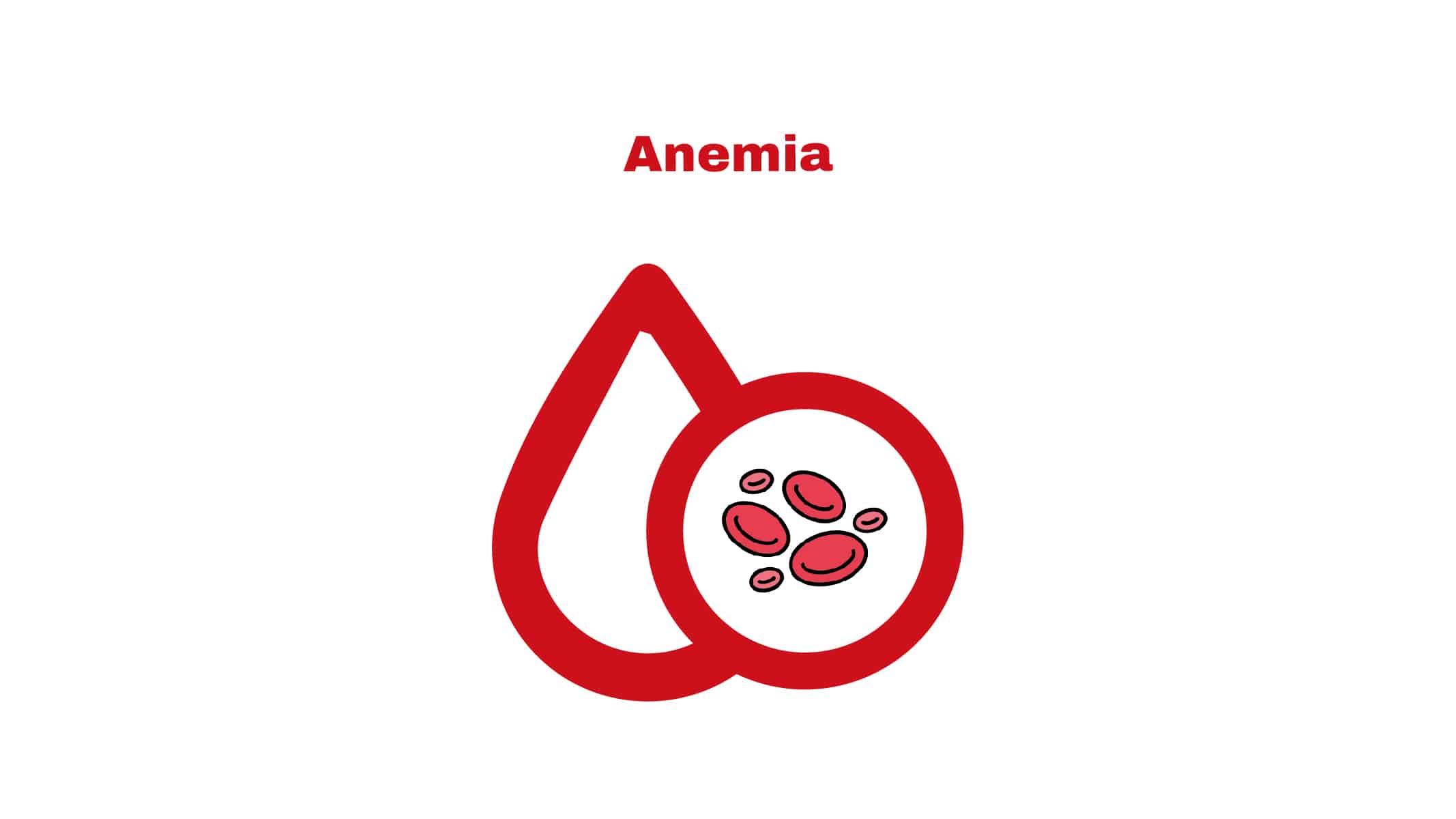Anemia is a disorder caused by the absence of a sufficient amount of red blood cells, which aid in transporting oxygen to the tissues. It also refers to the low hemoglobin amount in an individual that creates weakness and a feeling of tiredness. It can occur for a short period or a long-lasting condition that can be mild or severe.
Types of Anemia
The types of anemia are as follows:
- Aplastic Anemia: It occurs when the body does not produce enough amounts of new blood cells. It causes tiredness and chances of more infection, leading to uncontrollable blood discharge. It can occur at any stage of life.
- Absence of iron anemia: As the name represents, this type occurs due to the lack of iron. The iron deficiency causes low production of materials in the blood cells, which hinders the transformation of the blood cells and the capacity to carry oxygen. It can also lead to shortness of breath and tiredness.
- Sickle cell anemia: This disorder also affects the quantity of the blood cells in the body, referred as sickle cell disease. Sickle cell anemia damages the shape of the cells from round to a crescent moon, aiding in the transportation of oxygen to other body parts. It can cause a blockage in the transformation of the blood.
- Thalassemia: This type mainly occurs when any member in the family has or had thalassemia. It is a blood disorder in which the body contains less hemoglobin than the normal range. This illness can range from mild to severe, in which the body requires external blood caused by the incapability of the human body to produce sufficient blood needed for proper functioning.
- Lack of vitamin anemia: This is caused by insufficient healthy red blood cells in the body. Vitamin deficiency occurs due to the lack of vitamins in the food or if an individual’s body is facing trouble absorbing and processing these vitamins.
Symptoms
The symptoms depend upon the types of anemia that an individual experiences. The possible symptoms of having anemia are:
- Fatigue: When an individual faces extreme tiredness resulting from a mental problem, physical illness, or insufficient blood.
- Weakness: Reduction in the muscle’s strength.
- Pale or yellow skin: It happens when the skin has a lighter tone as compared to the normal complexion caused by the deficiency in blood flow.
- Abnormal heart rate: Irregular heartbeat occurs when the transportation of blood flow to the heart is damaged.
- Shortness of breath: It can be one of the symptoms of anemia. The shortness of breath increases with the decrease in the quantity of blood.
- Dizziness: It is a feeling of being unsteady.
- Chest pain: It is one of the symptoms of anemia that can be caused by the blockage in the heart’s arteries. The chest pain can vary from mild to severe.
Risk Factors
Following are the common risk factors caused by anemia;
- Having a diet that contains fewer amounts of iron and vitamins.
- Women who do not have menopause are mainly caused by iron deficiency. Mensuration leads to the loss of red blood cells.
- If an individual encounters kidney failure, cancer, and other chronic situations, the risk of having an amenia is higher.
- If anemia types such as thalassemia are present in the family history, then there is a greater risk of passing the illness to the other family members.
- Individuals aged sixty-five or above are at higher risk of this disease.
How to prevent anemia?
Intake of iron-enriched food such as lentils, beans, meat, vegetables, and dry fruits can aid in removing the iron deficiency, eventually preventing anemia. Similarly, using vitamin-rich food can also reduce the risk of anemia as dairy products, meat, soy products, and cereals. Moreover, fruits, tomatoes, strawberries, melons, and broccoli contain vitamin C, which can also increase the quantity of iron in the human body. Folic acid can also be helpful for anemia patients to remove the iron and vitamin deficiency to prevent the risk of having anemia.
Complications: The complications of this disorder can vary from person to person, such as:
- Tiredness that causes difficulty in performing routine tasks.
- Conceiving problems in women having folate deficiency.
- Abnormal and rapid heart rate is caused by pumping more blood to fill up the blood deficiency. It can also lead to heart problems such as heart failure.
When is it vital to see a doctor?
If an individual is feeling fatigued without any valid reason or decrease in the amount of blood or shortness of breath, then an individual must consult with the doctor. The doctor would first understand the individual’s symptoms; if these are similar to anemia, the doctor might suggest some blood tests to calculate the number of red blood cells in the body. After the diagnosis, the physician would analyze the result and prescribe treatment accordingly.
References:
- https://www.mayoclinic.org/diseases-conditions/anemia/symptoms-causes/syc-20351360#:~:text=Anemia%20is%20a%20condition%20in,each%20with%20its%20own%20cause retrieved on March 29, 2022.
- https://my.clevelandclinic.org/health/diseases/3929-anemia retrieved on March 29, 2022.
- https://www.webmd.com/a-to-z-guides/understanding-anemia-basics retrieved on March 29, 2022.
- https://www.medicalnewstoday.com/articles/158800 retrieved on March 29, 2022.
- https://medlineplus.gov/anemia.html retrieved on March 29, 2022.





